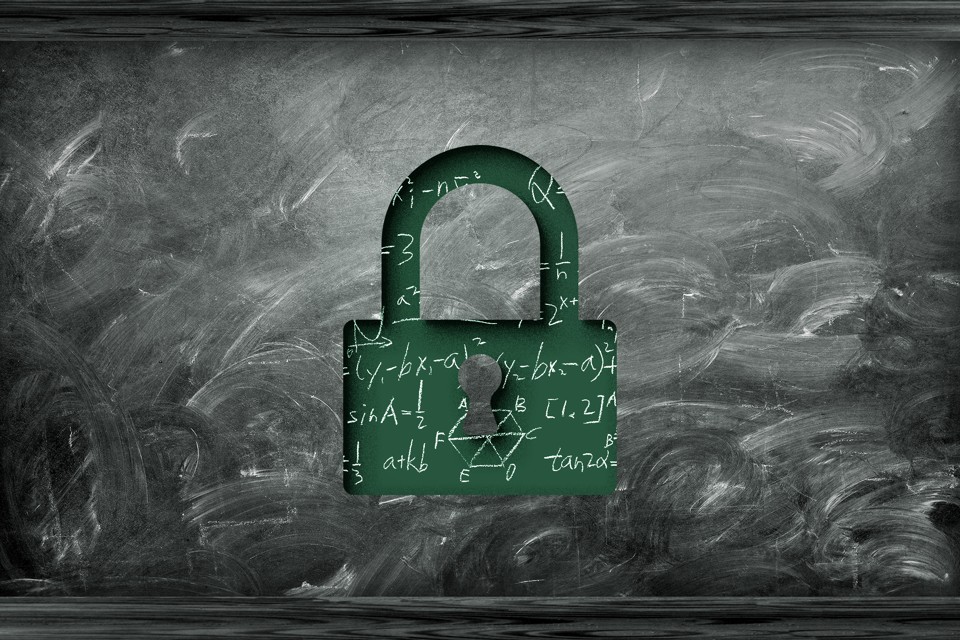
In most classrooms, it’s not a good sign when students’ eyes flick to the clock. It means they’re distracted and waiting to get out. In Nicole Naditz’s 12th-grade class in Sacramento, California, the opposite is true; students desperately eyeball the clock, wishing for more time. Naditz’s trick? She’s incorporated a new style of teaching into her lessons that was originally designed for adult games. The increasingly popular escape room has been given an educational twist—padlocked boxes that can only be accessed by decoding verbs, performing math problems, or solving scientific puzzles.
Naditz is no outlier. Over the last year, there’s been worldwide growth in educational escape rooms, and many educators are adapting the concept to fit the needs of their students—in both physical and digital learning environments. They’re an innovative way to bring technology and critical thinking into the classroom, and the benefits are twofold: Games have a history of promoting engagement in a learning environment, and the collaborative elements help students develop social skills.
Naditz shares a narrative with her class before the game begins. The inventorClaire Levine has been kidnapped, and her robot has been reprogrammed to destroy a hospital. To save it, students must activate the kill switch inside a box—but they need to get through four padlocks to do so, and they’ve only got 45 minutes. Multiple locked boxes and clues are scattered through the room—deciphering these leads to hidden keys and combination passwords. There’s a black-light flashlight that reveals hidden messages, and a QR code that directs players to a video containing a four-digit code.
“Unlike other forms of games where the player controls an avatar [such as Voki or Minecraft], escape rooms place the player directly into the game,” said Scott Nicholson, a professor of game design and development at Wilfrid Laurier University in Ontario, Canada. “Because of that, the effects of experiential learning can be more effective, as there are fewer barriers between the player and the experience.”
Nicholson has been researching the evolution of escape rooms since 2014 to see how they might fit into an educational program. He is widely considered the global expert on escape rooms, in part because he’s published the first academic discourse in this emerging field. “Escape rooms create a moment of passion around specific topics that then can be used as the spark to then ignite interest in something for a player to learn more about later,” he said.
Nicholson considers the growth of educational escape rooms a signal that educators are willing to adapt their behavior in order to better communicate with their students. “The concept of meaningful gamification is not to provide external rewards, but rather to help participants find a deeper connection to the underlying topic,” he wrote in a recent white paper.
While the use of escape rooms in education is a nascent idea, the first recreational escape room can be traced back to Japan in 2007. Now, there are 4,785 globally, the majority recreational, spanning 75 countries, according to the Escape Room Directory. They vary in design and style, but
Mayer and his colleague, Lisel Toates, started brainstorming. They specialize in using game design to demonstrate practical applications of mathematics, technology, and communication skills, and the computer game Minecraft seemed a natural fit for building a virtual escape room. They decided to combine the digital space with real-life physical props to encourage lateral thinking. Plus, if it was successful, it would be easy to share with his 22 school districts, as most game assets could exist on a thumb drive.
The eighth-grade class was studying steampunk literature, so Mayer created a corresponding narrative: An eccentric professor was trying to travel back in time to save his daughter’s life in Victorian England. To rescue her, participants needed to activate a portal, which involved referencing work they’d studied in class. Mayer ran his first room in May 2016, and structured it so that students started on their computers and then transitioned to their physical classroom, using the props he’d brought (wacky ink and 3D printed models) to help solve clues they’d encountered online.
He was impressed by how readily students took to the game.“It was social interaction, engagement, and immersion,” he said. “And we’ve had feedback from educators saying that students who don’t respond to traditional classes start to shine [here].”
Students are more likely to retain knowledge when they can apply what they’ve learned, a practice often labeled “active learning” or “constructivism” by education scholars. A 2011 study of physics teachers who changed their teaching method from a traditional teacher-centered approach to an active approach showed that learning improved 38 percent in students’ understanding of kinematics. A different higher education-focused study reported that students learning traditionally were twice as likely to drop out of courses and three times as likely to leave college altogether compared to students using active-learning methods.
To quote the student-development theorists Arthur Chickering and Stephen Ehrmann, “Learning is not a spectator sport. Students do not learn much just sitting in classes listening to teachers, memorizing prepackaged assignments, and spitting out answers.”
So far, Mayer has built three escape rooms, covering history, English, and science, and he has run them a total of five times—twice for students, and three times to show teachers how they work. Now he’ll focus on spreading them through his New York districts and beyond. An upcoming talk he’s slated to give at the American Association of School Librarians is titled “Escape Into the Curriculum.”
Nicholson has observed the escape-room trend growing, both inside schools and in the wider world. In a recent global analysis of escape rooms, he discovered that 8 percent had a purely educational framework, while 22 percent included some educational elements. “Many recreational rooms do have components that are educational,” he said. “Some rooms taught about history and other culturally relevant topics, and some took advantage of an interesting story of local interest and used the room to help players learn more.” Good historic examples are the 1866 Ontario Gold Rush room in Ontario, and the Fall of the Berlin Wall in Make a Break Berlin, in Germany. Some have a more political framework, such as theCuban Crisis game at Escapology in Orlando, Florida.
Shauna Pollock, a Toronto-based educator and the author of Creating Classroom Magic, a book about using the Disney-inspired principles of magic, safety, and courtesy in teaching, believes educational escape rooms have enormous potential to be effective in schools, since they can be adapted to any subject. “[They can] excite learners and help develop their skills, teaching them content through immersive, engaging play,” she wrote in a recent paper.
This style of puzzle-based learning is well suited for web-based games, which also provide access to a larger audience. In 2012, Arizona State University trialed this by building Science Detectives: Training Room Escape, a click-through online escape room for preK-12 learners. “Instead of the typical lecture, we wanted the student to have fun playing a game that just so happens to require using the Scientific Method to succeed,” said Charles Kazilek, the chief technology officer at Arizona State University.
Kazilek said escape rooms are a “natural problem-solving environment,” and he designed Science Detectives to produce a player summary when completed—something that students can print out for their teachers. They’ve had 98,000 visits to their homepage since launch, and Kazilek is working on a follow-up, Science Detectives: The Case of the Mystery Images, to release later this year. “One of our students commented, ‘It’s okay to trick us into learning.’ These types of games have the ability to do just that,” he said.
At the Rocky Mountain College of Art and Design, Sherry Jones, a games-studies instructor, is admittedly receptive to games in education, but was especially impressed with how quickly escape rooms engaged students. She said they’re structured so that players instantly become active participants, with a vested interest in winning. “In games, you read materials and have a Q-and-A session,” she said. “There’s no hand holding here.” Jones believes that escape rooms will start spreading through education as a “way to make the classroom a lot more fun.” That, in turn, could create a stronger incentive for learners to engage with their studies. “Escape rooms in education is pretty new,” she said. “There aren’t many initiatives—apart from Breakout EDU, but that’s not a full-scale escape room.”
Launched in 2015, Breakout EDU is a recurring name in the educational escape-rooms space, and what the French teacher Nicole Naditz uses in her California classroom. The company sells small boxes, priced $89 to $119, filled with escape paraphernalia (think padlocks, UV lights, and hint cards), and an empty thumb drive for downloadable lesson plans, created to complement the curriculum. This allows teachers to access the large Breakout community of more than 8,700 members worldwide, and download custom escape games, as well as build their own.
Naditz heard about Breakout EDU at a teaching conference and was intrigued; the idea of engaging students through collaboration, creativity, and critical thinking was appealing. She created two classroom escape experiences for her class, both in French. “In life and work outside of the classrooms, solutions aren’t singular, nor are they neatly packaged or synthesized into multiple-choice responses,” she said. “Breakout events prepare students for a more nuanced approach to solving problems.”
“The current K-12 system is obsolete,” said the Breakout EDU founder James Sanders, a former White House Innovation Fellow with a background in education and tech. So he devised a new one, using the escape-room model as a guide. Rather than breaking out of the room, players are trying to break into the box, and every lock involves challenges that create learning experiences.
“Breakout EDU games can help players explore Common-Core topics,” said Nicholson. “The gamification of the content can create short-term intense engagement.” However, he warns that the teachers don’t become obsolete; they need to create time for the class to analyze their gameplay. “Without reflection, we don’t learn. Reflection is how we take a short-term activity, connect it into our existing memories, and embed it into our long-term knowledge,” he said. But not everyone agrees. For some teachers, Breakout EDU is overly simplistic. “I think this is a rudimentary step,” said Jones, the games-studies instructor. “It’s great for starting out, as it’s plug and play, but it doesn’t push participants to be more active.”
Since this field is still in its early days, it will take some time before there’s a full scale roll out in schools. And because it’s so new, Nicholson’s research is the extent of the data on how escape rooms benefit learners. Educational escape rooms don’t exist in a vacuum; games must align with education standards and student engagement must be supervised. “Escape rooms are a tool, but not a magic wand,” Nicholson said. “They can engage players in the short term but need to be paired with other activities to bring about long-term change.”
But their potential is undeniable. “In the end, who does not like mystery and puzzles?” Kazilek said. “When you combine them with key learning objectives, you have a winning combination.”
the basic premise is the same: People are trapped inside a space for a specific amount of time and need to solve a number of puzzles to get out. Puzzles tend to be theme-related; in a prison room, you might decode graffiti, pick handcuffs, or defuse a bomb. Turning this into a classroom activity creates a number of challenges—teachers have to grapple with constraints imposed by classroom size, facilities, and the Common Core standards.
But Brian Mayer, a gaming and library-technologies specialist at Genesee Valley School Library System in New York, believes the payoff is worth the effort. He started looking into the concept in April 2016, after he received a request for a literature-themed escape room from a teacher in his district. “It’s been people requesting it from us. We’re not pushing people to do this,” he said.
[Source:- The Atlanta]


